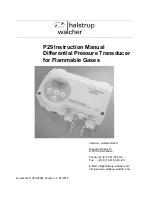
8
MDS 1710A/C and MDS 2710A/C/D
MDS 05-3447A01, Rev. F
Payload data—This is the application’s user communication data
which is sent over the radio network. It is the transfer of payload data
that is the primary purpose of the radio communications network.
Point-Multipoint System—A radio communications network or
system designed with a central control station that exchanges data with
a number of remote locations equipped with terminal equipment.
Poll—A request for data issued from the host computer (or master PLC)
to a remote radio.
PLC—Programmable Logic Controller. A dedicated microprocessor
configured for a specific application with discrete inputs and outputs. It
can serve as a host or as an RTU.
Programmable Logic Controller—See PLC.
Remote (Station)—A radio in a network that communicates with an
associated master station.
Remote Terminal Unit—See RTU.
Redundant Operation—A station arrangement where two transceivers
and two power supplies are available for operation, with automatic
switchover in case of a failure.
RTU—Remote Terminal Unit. A data collection device installed at a
remote radio site. An internal RTU simulator is provided with the trans-
ceiver to isolate faults to either the external RTU or the radio.
SCADA—Supervisory Control And Data Acquisition. An overall term
for the functions commonly provided through an MAS radio system.
Standing Wave Ratio—See SWR.
Supervisory Control And Data Acquisition—See SCADA.
SWR—Standing Wave Ratio. A parameter related to the ratio between
forward transmitter power and the reflected power from the antenna
system. As a general rule, reflected power should not exceed 10% of the
forward power (
≈
2:1 SWR).
3.0
INSTALLATION
There are three main requirements for installing the transceiver—ade-
quate and stable primary power, a good antenna system, and the correct
data connections between the transceiver and the data device.
Figure 5
shows a typical remote station arrangement.
















































